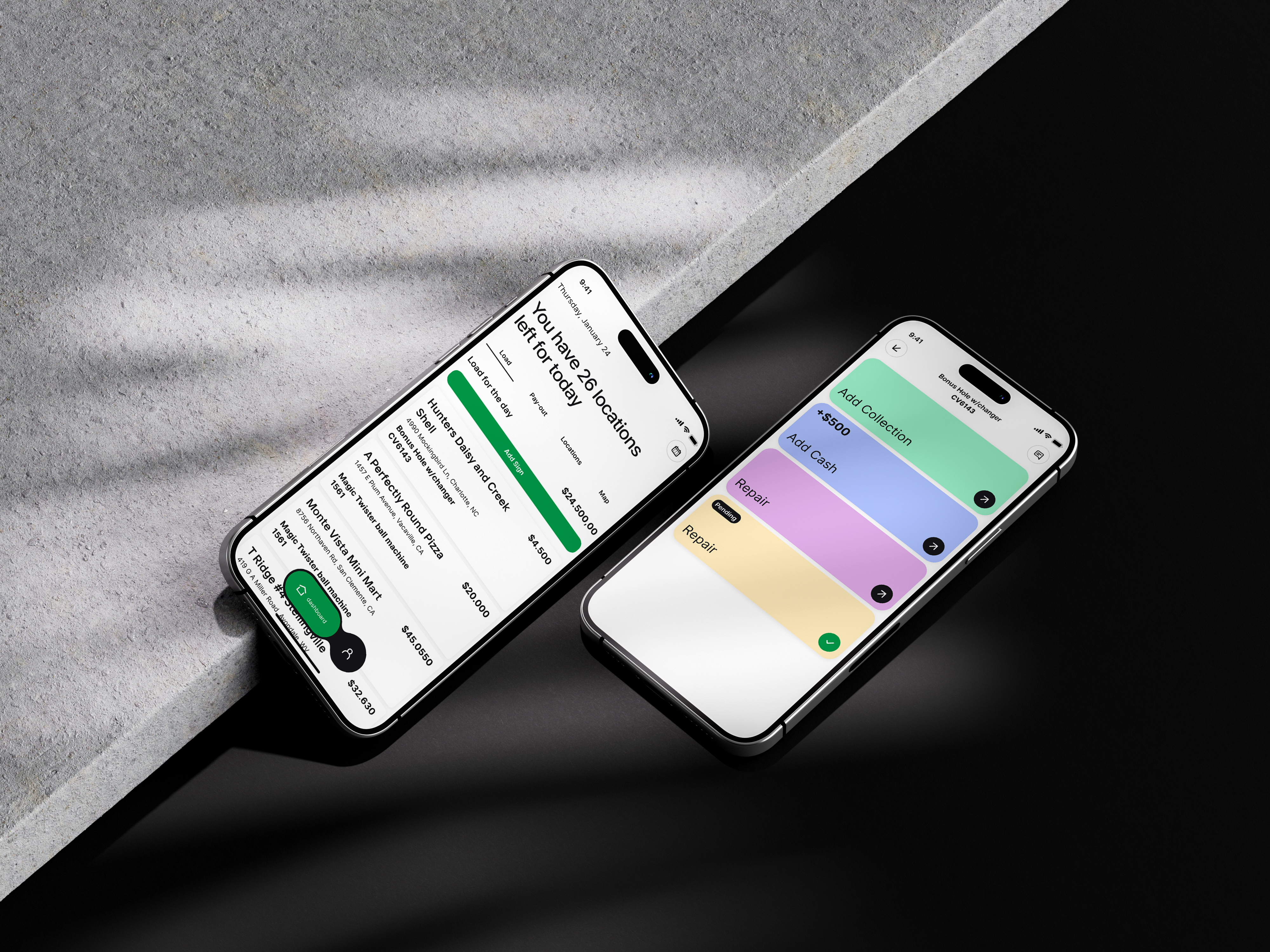Some clients plan for SaaS from the start. Others build internal tools first and only later see demand from the market. We’ve worked with both - and in this article, we reflect on the lessons we’ve learned helping companies rebuild, rebrand, and scale their products for wider adoption.
Introduction
We work with many service-based companies - by that I mean businesses whose core model isn’t IT, but who still need software to run operations. The main reasons why they come to us for building internal tools are pretty similar: they want to digitalize internal processes, their patchwork of tools no longer scales, or their old system is outdated and not supported anymore. From there, the story can take different paths. Some choose to keep it as an internal tool but also copy or adapt it for another company. Others see the opportunity to build a SaaS platform - a system that can serve multiple clients at once, often with different pricing tiers or freemium models. And sometimes companies want the flexibility to switch between single-tenant (dedicated) and multi-tenant (shared) setups, depending on the needs of each client. In this article, I want to share what we’ve learned helping our clients make those choices, and how the right preparation on the business side helps us as a vendor set up the right technical foundation.
White-Label vs. SaaS: The Core Difference
Before diving into real cases, it’s useful to clarify what we mean when we talk about white-label (single tenancy) versus SaaS (multi-tenancy). These are two different approaches companies take when they want to sell software beyond their own internal use.
| Feature / Approach | White-Label (Single Tenancy) | SaaS (Multi-Tenancy) |
|---|---|---|
| Core System | Same codebase, separate instance per client | One shared system for all clients |
| Branding | Fully customizable per client (logo, colors) | Mostly unified; limited branding options |
| Infrastructure | Each client has its own deployment + DB | Shared infrastructure, logically separated DBs |
| Data Management | Physically separated databases/instances | Shared system with strict tenant isolation |
| Maintenance | Updates need to be rolled out per instance | One update applies to all tenants at once |
| Scalability | Scaling = more servers/instances per client | Scales horizontally across all tenants |
| Cost Efficiency | Higher costs (duplicate infra & ops) | Lower per-client cost (shared resources) |
| Customization | Deep customization possible per client | Limited by shared architecture |
| Use Case Fit | Good for clients with strict compliance, heavy customization, or isolation needs | Best for broad SaaS platforms targeting many customers at scale |
Switching between single-tenant and multi-tenant
Some companies don’t want to pick one approach only. They build in flexibility to run most customers on a shared SaaS platform, while still offering single-tenant instances for enterprise clients with stricter compliance or customization needs. This option is harder to design but can be a strong competitive advantage.
MACH Principles
Another important aspect we sometimes bring into these discussions is MACH architecture: Microservices, API-first, Cloud-native, and Headless. It’s not a strict standard, more like a mindset for building SaaS that can evolve.
- Microservices keep functionality independent, so scaling one part of the system doesn’t affect the whole.
- API-first means integrations come easier later - important if you expect partners or third-party tools to connect.
- Cloud-native gives flexibility with scaling and cost control.
- Headless separates backend from frontend, which makes it easier to deliver the product across different platforms (web, mobile, even IoT).
We don’t apply MACH blindly - sometimes a simpler monolith works fine for an MVP. But when a client knows they want to sell and grow the product as SaaS, MACH helps avoid painful rebuilds down the road.
Case: Creating a White-Label Version
A good example of the white-label approach comes from our work with TIGSports, an event production company. They had a platform we originally built for another client, Backbone International, to manage complex event operations. Later, TIGSports saw the potential of this solution for their own business, but they needed it adjusted to match their processes and branding.

Instead of building everything from scratch, we created a separate version of the software as a white-label product. This allowed TIGSports to keep their own identity while relying on the same core system. The infrastructure was single-tenant — meaning TIGSports had their own deployment and database — but the codebase remained the same, so updates and improvements could be shared across both versions.
This approach gave TIGSports a fast route to digitalize their operations without the investment of building a completely new product. At the same time, it showed how internal software can evolve into something marketable: when another company in the same industry sees value in it, white-labeling becomes a practical step before moving toward full SaaS.
Case: Building SaaS from Day One
A good example of a company choosing SaaS architecture right from the start is Revenue Boosters, an amusement operator from Kentucky. They initially needed a new route management system because their old software had failed. But from the very beginning, they also saw a bigger opportunity: other operators in the industry faced the same challenges. That’s why they asked us to design their product with SaaS in mind, so it could eventually be offered to peers.
We built the MVP in just 3.5 months using our NestJS REST API boilerplate, which already includes essentials like authentication, user roles, and file management. Most importantly, we implemented a multi-tenant architecture, ensuring the system could securely serve multiple operators without needing a full rewrite later.

Thanks to those choices, Revenue Boosters solved their internal problems and positioned themselves to sell the product across the U.S. - turning what began as an internal system into a potential SaaS business.
What Clients Should Bring to the Table
When a company decides from day one that they want to build SaaS or eventually sell their software, they don’t need to have all the technical answers. What matters most is clarity on the business side:
- Who the potential customers are.
- What problems the product should solve beyond internal needs.
- How they imagine selling it — subscription, usage-based, or licenses.
- Marketing plan
From there, it’s the vendor’s role to translate those business goals into technical choices: multi-tenancy vs. single-tenancy, whether MACH principles are needed or a simpler setup is enough for the MVP, how to design billing, and what infrastructure to choose. The more precise the business intent, the easier it is for us to recommend the right architecture and build a product that’s ready for growth.
Case: From Single-Tenant to Multi-Tenant with Switching
One of our clients began with a single-tenant setup. Their goal was to sell the product to a small number of companies, each running on a dedicated environment. This worked well at first, but as their customer base grew, maintaining and updating separate instances became inefficient.
They decided to move toward multi-tenancy - a SaaS setup where multiple customers share the same system but keep their data isolated. At the same time, they wanted the flexibility to switch certain clients back to single-tenant mode. Why? Some enterprise customers required stronger isolation or deep customization, and a hybrid model gave them the best of both worlds.
What We as the Tech Vendor Did
- Re-architected the system to support both shared and dedicated deployments.
- Abstracted core services to make them work across single-tenant and multi-tenant setups.
- Implemented tenant-switching functionality, so new customers could be onboarded on SaaS while enterprise clients could still get a separate instance.
- Adjusted deployment pipelines and monitoring tools to handle both models efficiently.
What the Client Brought to the Table
- A clear understanding that their sales strategy needed both SaaS and dedicated offers.
- Agreement on additional investment for the re-architecture phase.
- Defined pricing models - per-user subscriptions for SaaS clients, and premium pricing for dedicated deployments.
- Awareness of ongoing costs (AWS hosting, monitoring, support) and how these would affect margins.
- A roadmap of which clients might need switching, so we could prioritize features and rollout.
This hybrid model turned into a business strength: the client could market themselves as a SaaS provider for most customers, while still being able to say “yes” to enterprises that demanded their own environment.
Conclusion
Transforming internal tools into products others can use isn’t a single path - we’ve seen clients take all three:
- White-labeling, when another company in the same industry needs a similar solution.
- SaaS from day one, when the founders already see the market gap and want to scale broadly.
- Hybrid migration, when a single-tenant product later evolves into multi-tenancy, sometimes with switching for enterprise clients.
What makes the difference is not just the technical design but the preparation on the client’s side. The companies that succeed in turning internal tools into market-ready products come with clarity on their goals, pricing models, and how they want to sell — while being ready to budget realistically for both development and ongoing hosting costs.
From our side, the role of a vendor is to translate that business clarity into architecture choices, infrastructure setups, and migration plans. When both sides bring their part to the table, an internal tool stops being “just software” — and becomes a product with real potential to grow into a business.